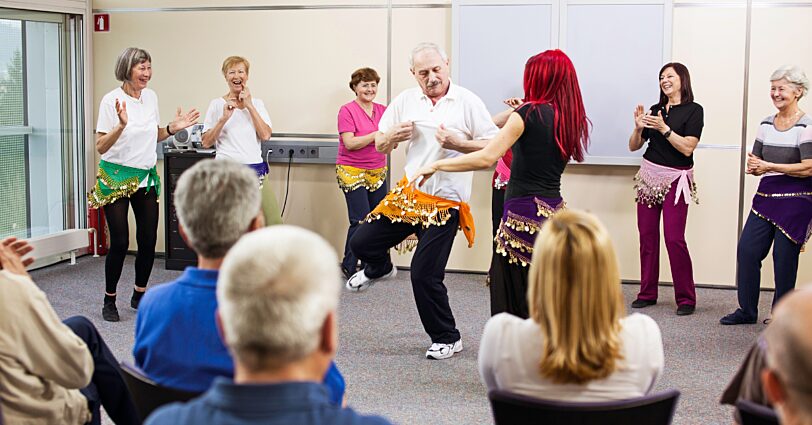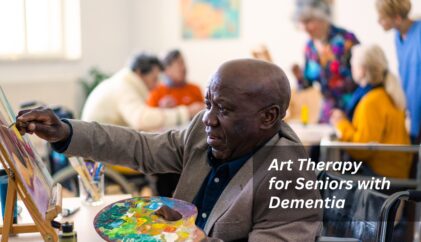
While play therapy and other methods of non verbal therapy are common in the pediatric population, there is much less information on nonverbal therapy for the geriatric population, although it stands to reason that due to dementia, Parkinson’s disease, post stroke sequelae, etc. using nonverbal strategies may be equally as beneficial for older adults.
Dance/Movement into Traditional Psychotherapy
While play therapy and other methods of non verbal therapy are common in the pediatric population, there is much less information on nonverbal therapy for the geriatric population, although it stands to reason that due to dementia, Parkinson’s disease, post stroke sequelae, etc. using nonverbal strategies may be equally as beneficial for older adults.
Davis (2022) conducted a pilot study examining how older adults responded to dance/movement therapy groups.There were three main themes identified that were important to movement therapy with this population, including spatial proximity, verbal validation, and physical validation. All participants, particularly those who were hard of hearing, were more likely to use nonverbal communication when the therapist was closer to them.
Participants also responded to verbal validation, with:
- Tone and volume mimicking the patient’s presentation (i.e., participants who appeared timid were addressed with a quieter tone of voice)
Physical validation including:
- Brief Touches on the Hand or Shoulder
- Mimicking Clapping or Stomping to the Same Rhythm
- Eye Contact
- Smiling
Another study conducted by Ho, et al. (2020) examined differences between older adults with mild dementia assigned to a dance movement therapy group (DMT), exercise group, or wait list group over a one year period. Variables examined included severity of dementia symptoms, psychosocial functioning, and cognitive functioning.
Although participants in the DMT and exercise groups received the same quantity of intervention (24 hours spread out across a 12-week span), the participants in the DMT group showed significant:
- Decrease in Depression
- Decrease in Loneliness
- Decrease Negative Mood
- Improved Daily Functioning
While the participants in the exercise group did not vary significantly from participants in the control group. Practical strategies used included ensuring all exercises were adaptable for patients who were both sitting and standing, and materials including scarves, elastic bands, and small musical instruments were also incorporated to help participants with engagement, flexibility, and strength.
When examining research findings as described above, it is important to take these findings and translate them into practical suggestions for working with patients in long term care settings and SNFs. Although most clinicians are not certified dance movement psychotherapists, aspects of this therapy may be very beneficial in establishing rapport with patients, providing a form of behavioral activation, and reducing stress around verbalizing thoughts and feelings.
Using music preferences as a guide, clinicians may engage patients in listening to music and following a beat by clapping, tapping their foot, etc. As mentioned in the first study, both verbal and nonverbal interactions to show connection to the patient’s experience may improve rapport. Since music is processed in a different area of the brain than language, patients with difficulties speaking may be more likely to engage in an activity like moving to music rather than speaking directly to a clinician.
As clinicians, we are always looking for new approaches to provide therapeutic services, particularly for patients who may not respond to more traditional methods of psychotherapy. Incorporating aspects of dance movement therapy into psychotherapy sessions may be an excellent approach to reaching patients who may otherwise struggle to participate in a typical psychotherapy session.
References:
Davis, Diane, "Dance/Movement Therapy and Nonverbal Communication Among Older Adults With
Dementia: Development of a Method" (2022). Expressive Therapies Capstone Theses. 540.
https://digitalcommons.lesley....
Ho, R. T., Fong, T. C., Chan, W. C., Kwan, J. S., Chiu, P. K., Yau, J. C., & Lam, L. C. (2020). Psychophysiological effects of dance movement therapy and physical exercise on older adults with mild dementia: a randomized controlled trial. The Journals of Gerontology: Series B, 75(3), 560-570.



